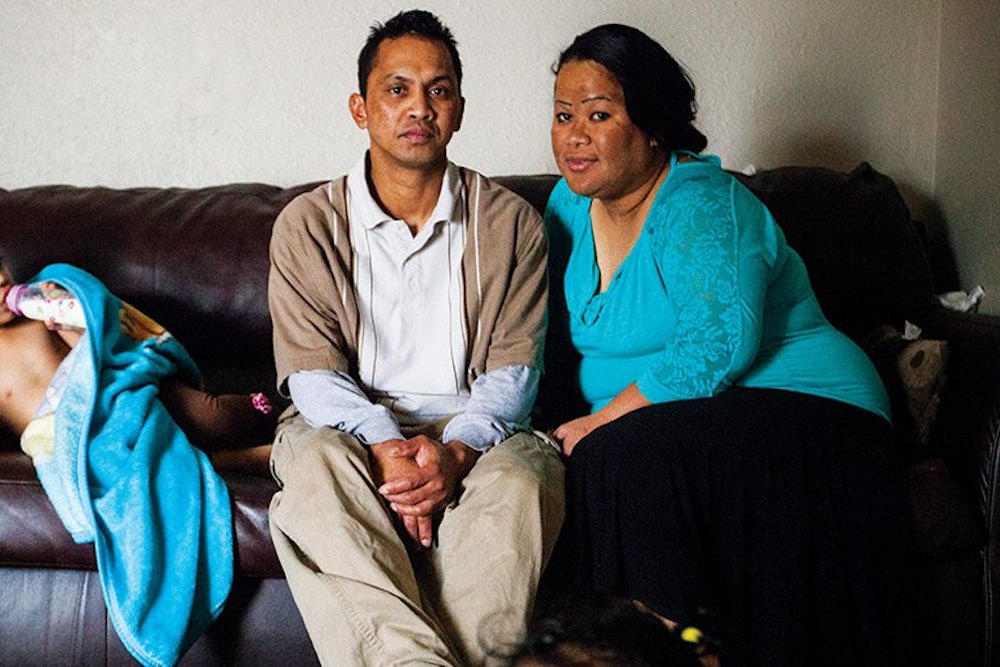On July 29, 2014, Maryann and Dexter Koshiba, 32 and 37 years old, sat, utterly exhausted, in a recovery room at Washington Regional Medical Center in Fayetteville, Arkansas. That morning, Maryann had given birth to a baby girl, and both had been up all night through the labor. Around five in the afternoon, Dexter recalled, he received a phone call. A local adoption attorney named Marti Woodruff was sending someone to the hospital with documents for the couple to sign. The Koshibas had been working with Woodruff for about a month to arrange the adoption of their unborn child, and everything had proceeded relatively smoothly until then. An unfamiliar woman arrived and handed over the relinquishment documents. Dexter was so tired that he couldn’t fully focus on the papers. But he signed them anyway, and roused Maryann to do the same. “Do you know her?” asked Dexter, once the woman had left, but Maryann was so groggy that she didn’t recognize anyone right then. Like that, one of the most important decisions of their lives was made.
Maryann and Dexter had grown up together in the Marshall Islands, on the capital island of Majuro, but Maryann had moved to Hawaii with her family and infant son in 2007, and then on to Oregon. Dexter followed in 2008, moving first to Arkansas, and then, after becoming involved with Maryann, to the West Coast, where they lived in Seattle for almost two years before moving, together, to Springdale, in the northwest corner of Arkansas—the unlikely home of a large Marshallese population.
Dexter got a job at George’s, a local chicken-processing plant, making around minimum wage; they found an apartment and settled in among the Marshallese community. In 2011, Dexter took a job at a Butterball turkey plant, where the wages and benefits were slightly better, but the couple still struggled to pay the $450 monthly rent. Leading up to Thanksgiving, the work was steady, as the plant churned out around 45,000 birds per day. But for the rest of the year, Dexter often failed to get enough hours. Their family was starting to grow—in addition to Maryann’s son, the couple had two new daughters—and some months they could barely pay their bills. Maryann wanted to get a job, but they couldn’t afford a babysitter. They pinned their hopes on a tax refund that might let them buy a ticket to fly Maryann’s sister over from the Islands so she could watch the kids.
In 2013, soon after their then-youngest daughter was born, Maryann got pregnant again. By March 2014, the couple had decided to place their unborn baby for adoption. They already had three children to care for, and both had other children from previous relationships living with extended family. The stories that circulated among the Marshallese in Springdale made U.S. adoption sound not dissimilar to customs back home: The adoptive parents would call and send pictures regularly; the biological parents would have the right to reclaim their children if need be; and the children would return to their birth parents when they turned 18. They’d also heard that Marshallese women who placed their babies for adoption in the United States were paid around $10,000.
With the help of a Marshallese man named Justin Aine—a distant cousin of Dexter’s—who had become a liaison between an adoption lawyer named Vaughn Cordes and the transplanted Marshallese community, Dexter and Maryann were matched with a prospective adoptive family. They chatted with the family over Skype and generally had a good impression of them. Immediately after they agreed to the adoption, they started to receive checks from Cordes—about $1,200 each month. The funds nearly doubled the family’s income. They were able to pay off old bills and buy clothes for the children and milk for the baby. Dexter bought a car to travel to and from work.
In the last month of her pregnancy, however, Maryann pulled out of the arrangement. She fought with Aine—she said he insulted her father; he said she was pestering him for money. She was still determined to place the baby for adoption, though, and the other Marshallese women in the community advised her to contact another local attorney, Woodruff, to complete the proceedings. “The Marshallese ladies talked about Marti,” said Dexter when I met him and Maryann last November at their tidy apartment in Huntsville, a village of about 2,000 people 27 miles outside Springdale, “and said, she’s a good person, helping people do anything.” Woodruff found a new family to adopt the baby and sent Cordes a check to reimburse him for the money he had given to Maryann during the pregnancy.
But almost as soon as Maryann gave birth, something seemed amiss. First, there was the rush surrounding the signing of the papers dropped off by the mysterious woman—papers that were written in English, which Maryann couldn’t read. (Woodruff doesn’t remember sending anyone from her office to the hospital and said that Maryann and Dexter may have been referring to a hospital social worker; she also insists that the documents would have been translated by the hospital.) When the adoptive parents arrived at the hospital, the two sets of parents crowded around the baby for a group photo. But then the adoptive parents moved to a separate room until the infant was ready to leave the hospital. Woodruff gave Dexter and Maryann some cash—a couple hundred dollars, Dexter said—and instructed them to go home. They asked to speak to the adoptive parents one last time—they wanted to exchange contact information. Woodruff, the couple said, put them off—disappearing somewhere in the hospital. Maryann was confused; she had thought that the adoptive mother would stay in touch. Now she was being hustled out of the hospital without so much as a phone number. (“If she had been promised phone numbers by somebody, it wasn’t us,” said Woodruff.)
Months passed, and no photos came. Depression took hold of Maryann. “Every day I’m always crying, and my husband [asks] ‘What happened to you?’” Maryann said. “I’m worried because I don’t know where she is right now.” She began to call Woodruff regularly, asking for the adoptive parents’ phone number. She wouldn’t try to take the baby back, she promised, she just wanted to know the child was OK. (Woodruff said that Maryann only called to argue that she hadn’t signed a consent form, but that if she had asked for the adoptive parents’ phone number, she would have told Maryann that information is confidential.) Dexter said they offered to repay the money they’d received from Woodruff, but Woodruff told them that wasn’t a possibility. Woodruff stated that she makes sure all the birth parents she works with understand the terms of their agreement: “I have never promised open adoption to anybody because, to me, that would be misstatement of Arkansas law.” At one point, Maryann tried to go back to Aine, hoping to reconnect with the first set of adoptive parents—the ones who had promised to stay in touch. But, of course, it was too late.
In desperation, Maryann called the police. She says the police called Woodruff, then told Maryann that she wasn’t entitled to any information since she had willingly entered into a closed adoption. Closed adoption is the default form of adoption in Arkansas, and it mandates that adoption records are sealed; no identifying information about either birth or adoptive parents is shared and the parties can only contact each other through their agency or attorney. If she persisted in calling the precinct or Woodruff’s office, Maryann claimed the police told her, she’d be thrown in jail. Together, the couple approached a lawyer to see if they could sue for the return of the baby. But after a quick call to Woodruff’s office, the lawyer told the Koshibas the same thing the police had: They’d agreed to a closed adoption, and that was that. “I don’t even know what that means, ‘closed adoption,’” Maryann told me. “What is ‘closed adoption?’” Dexter repeated. “We’re just trying to find someone to help us.”
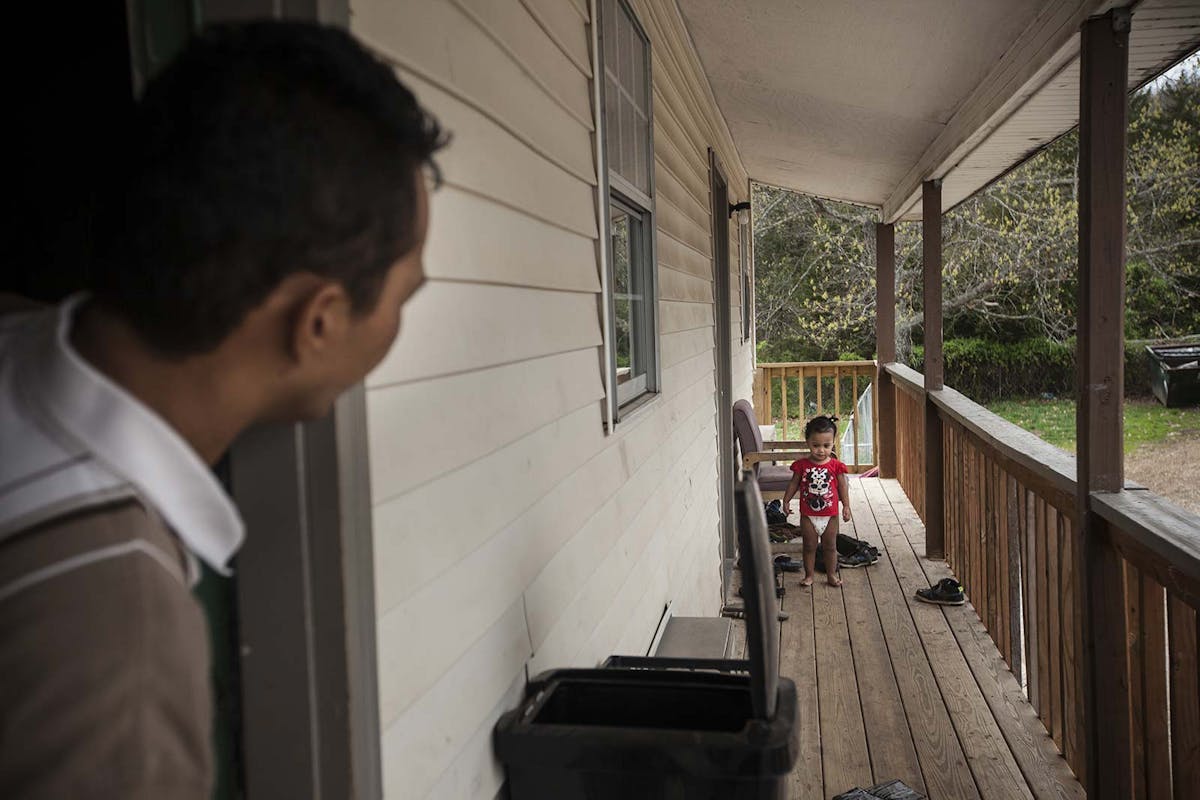
In 1946, the U.S. Navy detonated the first of nearly 70 nuclear bombs off the coast of Bikini Atoll, one of the 1,200-plus islands that make up the Marshall Islands. More than 2,000 miles in every direction from Australia, Hawaii, or Japan, the Islands had become a U.N. trust controlled by the United States after World War II, and the bombings were part of America’s postwar Pacific Proving Grounds project—more broadly, they were part of the Cold War nuclear arms race. To clear the way for the testing, the 167 residents of Bikini Atoll were evacuated: first to the uninhabited atoll of Rongerik, where they began to starve; then to Kwajalein, where they lived in tents along an airstrip; finally, to tiny Kili Island, less than half a square mile large. Residents of other atolls were also relocated; some were neglected. A 1954 H-bomb test on Rongelap Atoll left the unevacuated residents there exposed to three times the radiation as people who lived near Chernobyl. By the time the testing stopped in 1958, the U.S. Atomic Energy Commission called the idyllic Marshall Islands “by far, the most contaminated place in the world.” As compensation, the Marshallese received heavy financial assistance from the United States for many years.
In 1986, the country finally became an independent nation—the Republic of the Marshall Islands—but the ties weren’t completely cut. The Islands entered a Compact of Free Association with the United States. In exchange for permitting a U.S. missile defense system to remain on Kwajalein Atoll, the Marshallese could enter and exit the United States without visas. They wouldn’t become citizens, but they could study or work in the United States for as long as they’d like.
This was appealing to the Marshallese, who were beginning to feel the combined pressures of a reduction in U.S. aid and overpopulation. The country’s fertility rate is relatively high—4.1 children per woman—and some of the coral atolls that make up the nation are scarcely bigger than a football field. On the capital island of Majuro, 30,000 people live on a narrow strip of sand amounting to less than four square miles of land.
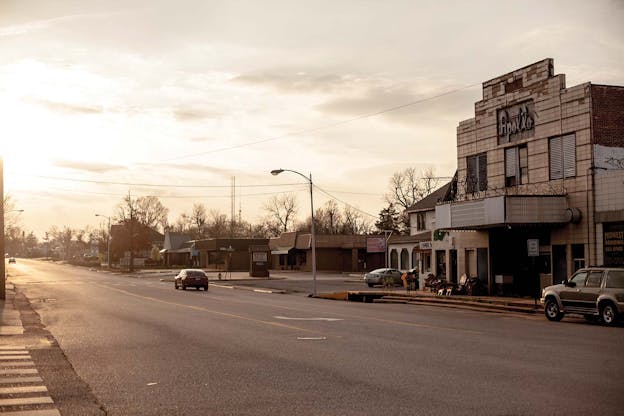
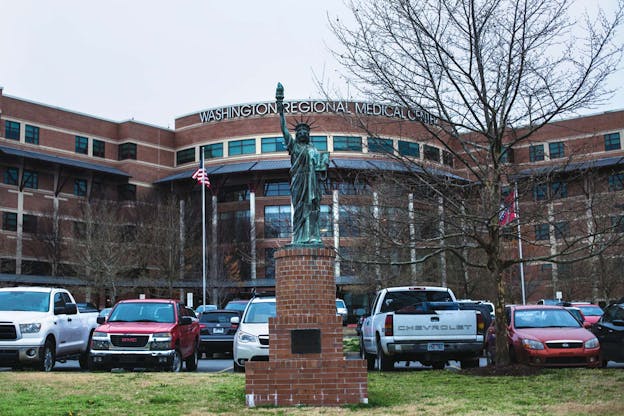
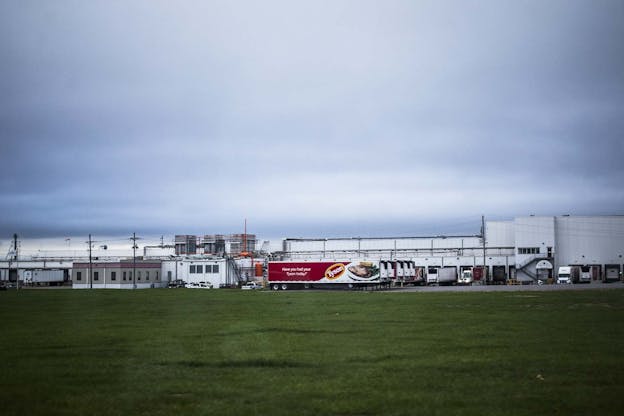
The precise reason any population picks up from one place and ends up in another is hard to explain. But the Marshallese credit a man named John Moody with bringing them to northwest Arkansas. Moody arrived from the Islands in the ’80s to work for Tyson Foods, and soon spread the word among his tightly interwoven network that there were jobs to be had in Springdale. Within ten years of Moody’s arrival, the city had become “the Springdale Atoll”: the largest diaspora community outside the Islands, with anywhere from 5,000 to 15,000 Marshallese. In 1999, the Marshallese community in Springdale awarded Moody an honorary plaque, thanking him “for his pioneering efforts to bring us to our adopted homeland.”
Springdale offers Marshallese emigrants something like the good life. The city sits in the middle of a sprawling suburban corridor of nearly half-a-million people, connecting what used to be the separate towns of Fayetteville, Rogers, and Bentonville. Venture a few miles off Interstate 49 in either direction, and the countryside is still Old Arkansas: rolling Ozark hills, covered with grazing cattle—the region, wrote anthropologist Jamie C. Brandon, that defined “what it means to be rural in America.” (It was from the Ozarks that the Beverly Hillbillies began their journey.) But along the main drag of I-49, you find subdivision after subdivision, the McMansions representing an axis of industrial might anchored by the global headquarters of Walmart in Bentonville, shipping company J.B. Hunt Transport in Lowell, and Tyson Foods in Springdale. Dense, commercial strips full of fast-food restaurants run from the highway to downtown Springdale, where the remnants of the aging buildings sit beside large new community complexes named after corporate benefactors. The region is one of the fastest-growing metropolitan areas in the country. Housing is abundant, and some Marshallese families are even able to buy their homes and approximate a middle-class life. A handful of Marshallese churches and a Marshallese consulate have sprung up around the area to cater to the community.
But it’s not an easy life. Most new Marshallese work in the local poultry plants: George’s, Cargill, and Butterball, in addition to Tyson. (In 2013, the Arkansas Senate declared Springdale “The Poultry Capital of the World.”) These are smelly, dangerous jobs that rarely pay more than minimum wage. In 2011, 173 Tyson workers at one of the Springdale plants were treated for exposure to chlorine gas after a chemical accident.
New Marshallese arrivals also confront a cultural chasm. On the Islands, large, multigenerational families typically share a residence, and they continue to do so in Arkansas, with many one-family apartments housing as many as 20 people. (Fears of eviction for over-occupancy lead many Marshallese to underreport the number of people living in their homes, leading to wildly disparate estimates of the community’s size.) After generations of living on family-owned land, many are paying rent for the first time. Many have never owned a car. And after growing up with island weather, many people wear sandals into the winter. When I met Maryann, her toddler was dressed in a tank top, even though the temperature hovered in the 30s.
The adjustments are not just a challenge for the Marshallese, but also for their new neighbors. Children often arrive for school hours late—their parents, local doctors and attorneys like to joke, are used to “island time.” One school principal reportedly bought alarm clocks for the parents of all her Marshallese students. Accustomed to the diffuse oversight of relatives and family friends, Marshallese parents often let their children play outside without supervision. To Springdale locals, said Consul General Carmen Chong Gum, this could look like neglect. Doctors and nurses reported that many of their Marshallese patients failed to show up for appointments, and when they did, they were often severely ill. Community liaisons chalk this up to the strong culture of reserve among the Marshallese, where many see admitting sickness as a sign of weakness. In 2010, a local coalition of nonprofit and government health organizations published an acclimation packet, with an introduction by then–Governor Mike Beebe, that discussed American culture in starkly rudimentary terms: Children need a good night’s sleep; be on time for job interviews and medical appointments; speak up if you don’t understand something.
But nothing baffled Arkansas officials and community members more than the fluid notions of Marshallese family: a matrilineal system wherein all related members of a generation are considered the joint parents of a child. “[Kids] will show up [to school] one day with someone and say, ‘This is my mom,’” said Sandy Hainline-Williams, an American nurse who has become a cultural liaison for Springdale’s Marshallese. “And the next day, a different woman: ‘This is my mom.’” Other nurses puzzled over women who were slow to answer when asked how many children they had. “I’ve teasingly said, ‘You can’t not remember having a baby!’” said Gina Jeremiah, a pregnancy intake nurse at Parkhill Clinic for Women, an obstetrics-gynecology practice within Willow Creek Women’s Hospital in Springdale. “All the women take on the role of mother in the kids’ lives,” said another nurse.
These attitudes, anthropologists believe, were born of the ethos of extreme generosity necessary for crowded island life. “There’s a general idea that things belong to everyone, as opposed to specific people,” said Elise Berman, an anthropologist at the University of North Carolina, Charlotte. “And those things include children.” Some studies have found that 25 percent of Marshallese children are raised by someone other than their biological parent. Many adoptions in the Marshall Islands take place because an older relative has actively solicited the offspring of their younger kin—a stark contrast to the United States, where adoption is mainly seen as the last resort of unprepared or unwilling parents. Older family members will approach expectant relatives and, in a telling linguistic formulation, say, “Give me my child.” And because an adopted child usually just moves a few doors down, adoptees almost always know their biological parents. If a birth mother suspects her child is being mistreated, she has the right to take him back. “We have this belief that the role of the mother will stay there forever,” said Melisa Laelan, a Marshallese court interpreter and the founder of Springdale’s nonprofit Arkansas Coalition of Marshallese. There’s even a Marshallese phrase for this: Jined Ilo Kobo, which refers to the unbreakable connection that a mother has with her children; it can’t be severed no matter who raises them.
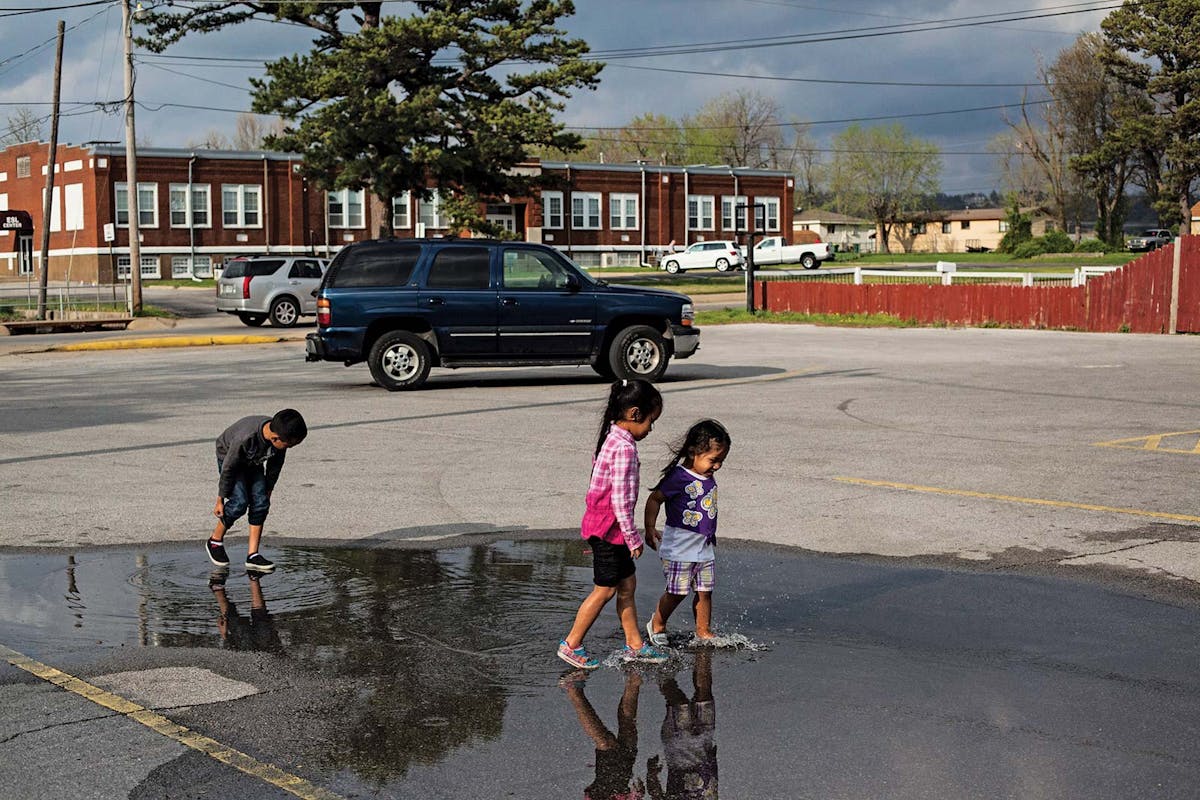
When President Reagan spoke to the Marshallese on the occasion of their 1986 independence, he promised that they would “always be family.” A decade later, it didn’t seem like a bad gamble to some Marshallese to make that a literal reality: expanding their family as they’d always done, through the gift of a child. In the late ’90s, the Marshall Islands underwent an international adoption boom: Children from the Islands began leaving in greater numbers than ever before. When American adoptive parents began to send care packages to their children’s biological parents back in the Marshall Islands, Island residents watched with interest. But the primary reason for the uptick was that adopting a child from the Marshall Islands was easier than adopting from other foreign countries. For all other international adoptions, adoptive parents are required to obtain an “orphan visa” that satisfies certain State Department requirements for bringing a child into the United States. Marshallese adoptees needed no visa.
Before 1996, there had only been around seven international adoptions from the Islands each year; by 1998, the number was up to 143. That tally doesn’t sound alarmingly high, but juxtaposed against the Islands’ population of about 55,000 people in 1998, it was a startling outflow of the nation’s offspring—that same year there were fewer than 2,000 total births in the Marshall Islands. Adoption agencies began to compete with each other by promising perks—to send birth mothers to Hawaiian colleges or entire families to Disneyland, according to research by Jini Roby, an attorney and Brigham Young University social work professor.
In 1999, the Marshallese government invited Roby to study the rapid acceleration of international adoption. She found that 82 percent of the Marshallese birth mothers she interviewed believed that their children would return when they were 18 “with a good education and material wealth”; around 70 percent believed they would receive financial support; 70 percent also believed that their child would come home if the adoption didn’t work out. When Roby led a forum for Marshallese teachers and government officials to explain U.S. adoption, her audience “sat in stunned silence,” she later wrote, as they tried to absorb the fact that a “legal fiction” could sever “an unchangeable fact of life.” The Marshallese, Roby told me, were “not only more trusting” but also working from a drastically different cultural frame of reference. For the Marshallese, adoption “doesn’t tear families apart,” said Roby, “it builds them.”
Later that year, the Marshallese government enacted an adoption moratorium so they could, with Roby’s help, draft the country’s first formal adoption laws. But during the 15-month moratorium, Marshallese adoptions didn’t really stop. Instead, agencies began flying pregnant Marshallese mothers to Hawaii, where they set them up in apartments until they delivered, sometimes securing their commitment with nothing more than $300 and a plane ticket to Honolulu. A 2003 investigation by The Baltimore Sun uncovered agencies that withheld mothers’ passports and lawyers who brawled in online forums, accusing each other of poaching birth mothers. The business, The Sun found, was lucrative: Some lawyers made up to $13,500 per baby, with Marshallese recruiters taking a $2,500 cut per mother. In most cases, the mothers’ medical bills were picked up by Medicaid. There were concerns, Hawaii State Senator Roslyn Baker recalled to me, that Hawaii was becoming “a gateway for human trafficking.”
U.S. state and federal authorities sought a way to shut down these adoptions, which, if not blatantly illegal, seemed to operate in a gray area of the law. In 2003, President George W. Bush signed a law that amended the Compact of Free Association, requiring a visa for any Marshallese person entering the United States for the purposes of adoption. In Hawaii, Marshallese women flying into the state were asked at customs whether they intended to relinquish a child for adoption, and immigration officials began to confiscate the passports of Marshallese they suspected of circumventing adoption laws, even threatening to deport some. Most effectively, said anthropologist Julianne Walsh, a Hawaiian family court judge began requiring third-party interpreters to be present for Marshallese adoptions—a move she believes “effectively ended the adoptions in Hawaii.”
But as Hawaii and, to some extent, the federal government tightened its oversight, the adoptions just moved: to Utah, Colorado, Oklahoma, Arizona, and, most significantly, Arkansas. Private domestic infant adoptions in the United States are controlled at the state level, and Arkansas’s lenient, “adoption-friendly” laws had long made it a destination for hopeful parents from around the country. Birth mothers in Arkansas can consent to adoption anytime after they give birth—sooner than in most other states, which require at least a two-day waiting period. As in many states, there’s a window of time in which mothers can revoke their consent to the adoption, but Arkansas mothers can also waive their full revocation window, so that adoptions become irrevocable after just five days.
In the decade after the Marshall Islands slowed outgoing overseas adoptions, international adoption began to decline across the board. Since the peak of international adoption in 2004, when nearly 23,000 foreign children were adopted by U.S. families, that number has been cut by more than two-thirds. In some cases, this is because “sending countries,” like China, now have substantial domestic demand for adoptable babies; in other countries, like Guatemala, Vietnam, or Ethiopia, high-profile reports of abuse have forced either the United States or the sending country’s governments to stop or slow down adoptions. The State Department reported just over 7,000 adoptions in 2013, and 6,441 in 2014. For adoption advocates, this is an alarming trend—the “adoption cliff,” they call it. Critics of adoption policies say it’s the natural leveling off of an unnatural bubble. In market terms, the supply is being cut off, while the demand remains as high as ever.
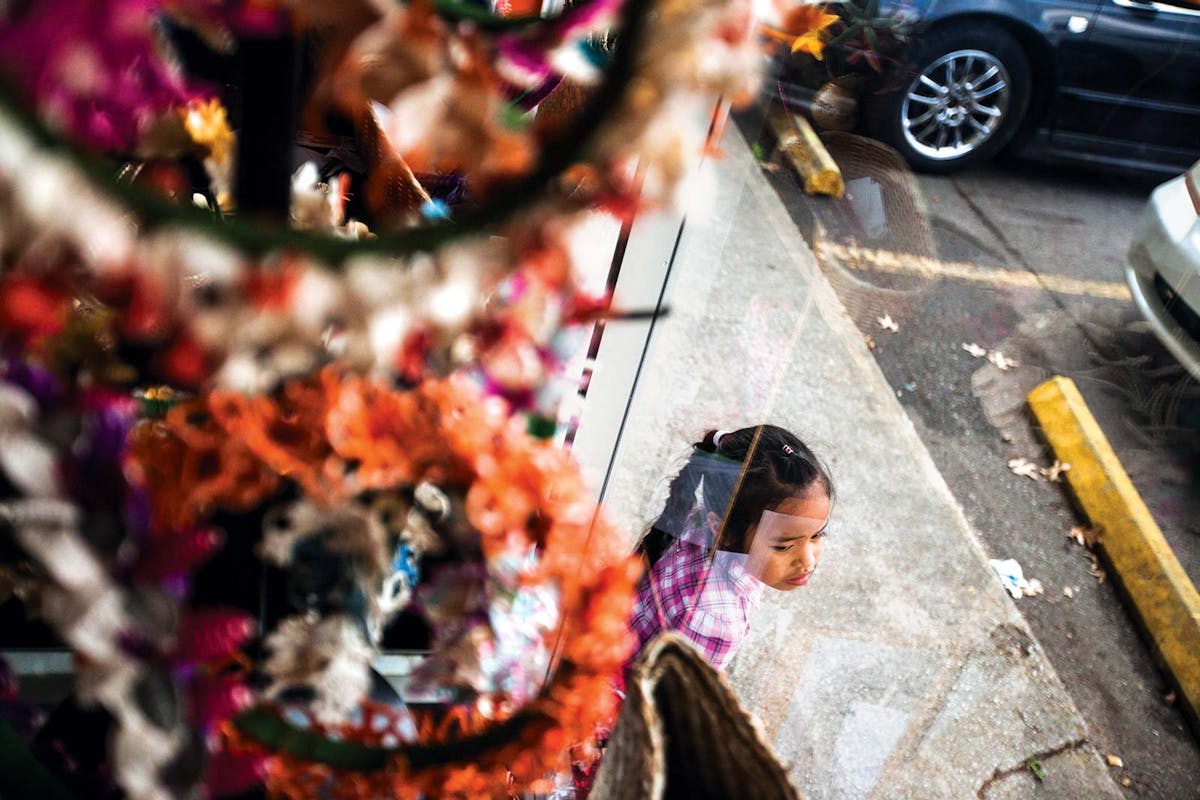
Last June, within a single Springdale-area hospital, six Marshallese children were adopted in just three days. Making her rounds of the nursery the following Monday, the numbers struck pediatrician Stacy Furlow as impossible. “We wouldn’t have had six adoptions in a year five years ago,” she said. According to one person with inside knowledge of adoption proceedings, about 90 percent of the adoptions in Washington County now involve Marshallese babies.
Like everyone in the region, Furlow, a cheerful, animated mother of four, with a wavy blond bob and welcoming smile, had followed the growth of the Marshallese community with interest. When she was in high school in Fayetteville in the late ’80s, Springdale was so racially homogenous that she sensed tension when Fayetteville’s multiracial sports teams traveled there to play. To Furlow, the diversification of the community—it’s now 40 percent Pacific Islander and Latino—was a positive development, evidence of a little pocket of progressivism.
Furlow, who has done volunteer health work in Haiti and has developed familiarity with conditions common to developing-world children, ended up building a practice where she sees many adoptive families. But as more and more adoptive parents began coming to her office with newborn Marshallese babies in tow, she was puzzled. Her corner of the Ozarks, it seemed, was becoming the new destination for international adoptions—and this development was bringing along with it some of the ugliest baggage of cultural misunderstanding. On one adoption blog Furlow stumbled upon, a would-be mother wrote of the Springdale Marshallese, “these people make babies.” An Alabama church that had sent nearly two dozen members on a mission to Springdale claimed to have returned home with promises from several pregnant women, according to one adoptive parent’s blog.
Furlow wasn’t the only one concerned. At area hospitals, staff watched dozens of their Marshallese patients plan to relinquish their children, often to couples who had signed up just months—or even weeks—earlier. (Hopeful adoptive parents frequently wait years for a match with a healthy newborn baby.) Labor and nursery nurses traded horror stories involving tearful and confused new mothers, who asked whether they were allowed to hold or feed their babies, and lamented that they couldn’t change their minds because they lacked the money to repay the lawyers. Once, after a mother refused to part with her baby, an adoption attorney came in with his translator to “chew the mother out,” said one nurse. Another time, an attorney wrote an angry letter to an area hospital, instructing the staff to stop speaking to the mothers about adoption, said another nurse.
Staff at both local hospitals, Washington Regional and Willow Creek, began increasing their efforts to inform Marshallese mothers of their rights, but they were often stymied by the language barrier. Though the hospitals subscribed to a phone-in translation service, Marshallese interpreters were so rare that they needed to make an appointment. They often had to rely on family members or the adoption liaisons instead, and were never sure what information was being passed along. And Marshallese women were arriving from the Islands all the time; it was the new arrivals who seemed to give up their children most often. “It sounds juvenile, but I put it in terms of, ‘Do you understand that your baby goes away and never comes back?’” said Gina Jeremiah, the pregnancy intake nurse at Parkhill. “There’s been several instances where they go, ‘No, I’ll see my baby when it turns 18.’”
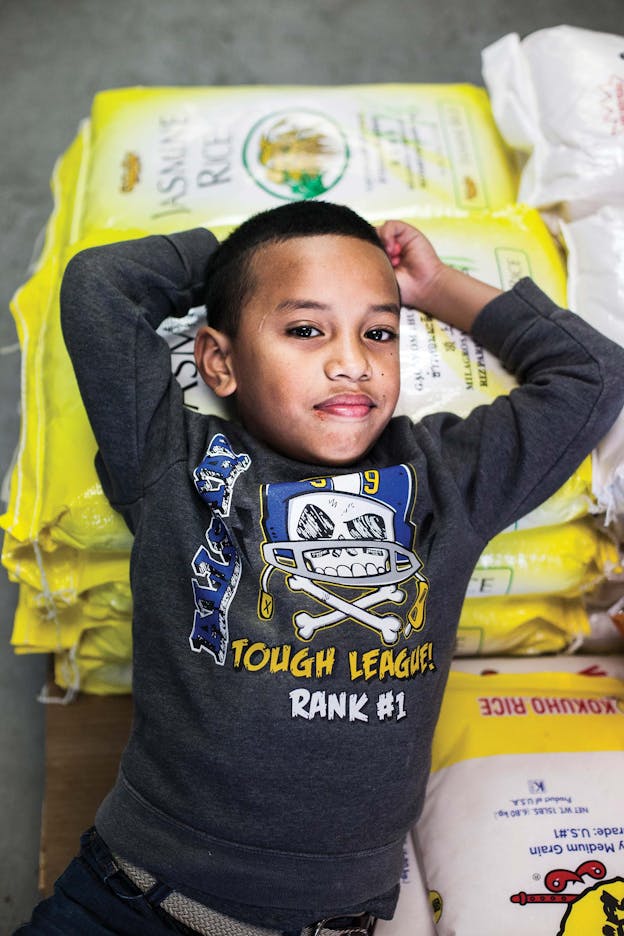
For Furlow and many of her colleagues, an uneasy sense of complicity began to set in. (It was Furlow who contacted me last July and asked me to look into this story.) “I feel like I’m involved unwillingly,” said Jeremiah last November. “On the one hand, we’re happy for the couples that are struggling and can’t get pregnant. But then from the other side of it, I ache for them a little bit—for the patients that are having to go through this,” said another Parkhill physician, Julian Terry. “For all of us,” said Laureen Benafield, one of Furlow’s pediatric partners and an adoptive mother herself, “the red flag has just been the volume ... the sheer numbers feel so wrong, predatory.” Benafield wasn’t the only one to note the volume: “When we say it’s gotten out of control, it’s really a money-making business for many people,” Robert Hix, an OB-GYN at Parkhill, told me. “You can almost tell that some of them are not sure what’s going on until the baby is gone.” A judge who has handled many adoption cases summarized the sense of concern and helplessness among his colleagues, who told him: “If they present you paperwork in the right manner, then you’ve gotta sign it.”
But the flip side of the same story is told very differently. The lawyers and liaisons who help facilitate adoptions for the Marshallese believe they’re offering an essential service. Paul Petersen, a Mormon attorney who has done mission work in the Marshall Islands and was recently elected as a county assessor in Arizona, has been facilitating Marshallese adoptions in Arkansas for five years without a state license. He plans to take the bar in Arkansas so that he can continue to do so. “The need is great,” he told me. The first lawyer that the Koshibas worked with, Vaughn Cordes, said that he’s also helping the women. “The reality is, they can’t afford to care for [these] children.” The women he works with, he told me, “all know from the start” that they might never see their babies again. “It’s too complicated, it’s too hard, to have the mother think she’s in an open adoption.”
The most forthcoming of the lawyers, Marti Woodruff, explained it in even more blunt terms: “They’re not going to raise the children. The only question is: Who will? The rich friends’ family or the adoptive parents?” Springdale, Woodruff said, has essentially been faced with developing-world issues—“It’s Third World meets colonialism,” she told me when we met in her country-kitsch-filled office last November—and the lawyers and the families who adopt are just doing what they can to help.
Woodruff, who describes herself on her website as “a down to earth, mom and grandmother who just happens to be an attorney who does private adoptions,” has a softer reputation than Petersen or Cordes. “Aunt Marti,” as the hospital nurses call her, likes to say she’s facilitated adoptions “for every kind God makes.” When Springdale’s chicken factories were staffed by Latinos, she did Latino adoptions; of the 200 adoptions she’s facilitated over the course of her career, she estimates that 75 were for Marshallese birth parents. She is said to leave her business cards in local Marshallese churches, and every year she sponsors a Marshallese women’s softball team, buying team t-shirts emblazoned with her law office’s logo.
Woodruff pointed to the high birth rates and aversion to birth control within the Marshallese community. Some women have come back to her, she said, just months after giving up their newborns, pregnant again and hoping for the same financial arrangement. The Marshallese have lots of problems, Woodruff said—a 50 percent diabetes rate, a lack of education—“but everybody is bitching about adoption.” In a neighboring county, there’s a lawyer who, she said, has conducted 700 adoptions for white babies. She doubted he’s ever been asked whether his Caucasian birth mothers are paid. And she defended the money she pays Marshallese birth mothers as just enough to replicate a successful, working-class life. She makes her clients sign consent forms, which specify that pregnant woman must reimburse adoptive families for money spent on their behalf—usually between $8,000 and $12,000 total—if they decide not to complete the adoption. But Woodruff said she knows the latter clause is all but unenforceable—“if they had resources to recover, they wouldn’t have chosen adoption in the first place.” Woodruff also said that she makes every effort to avoid misunderstanding:“I’m very careful to explain, and even the consent documents explain, that ... this is a closed adoption, and that it’s very likely that [the mother] won’t see this child until after he or she seeks [the mother] out as an adult when they turn 18.” The documents, she said, are translated in an open court, “so there is no question that they understand the difference between informal Marshallese adoptions and formal U.S. adoptions.”
Though they are something akin to business competitors—and, like many rivals, hold decidedly poor opinions of each other—Woodruff’s rationale is not that different from that of Justin Aine, Cordes’s coordinator. Aine, like Woodruff, believes he is offering local Marshallese women a service they want and need. “If they want to do it, they can,” he said when we spoke by phone in January. He said he doesn’t solicit pregnant women (as Woodruff and others claim). The women mostly come to him because of his deep roots in the community. For years, he helped the Marshallese prepare their taxes; after hours, he sponsored a local softball team and ran a traditional Marshallese dance group. “I get a lot of girls, a lot of chicks,” he told me, referring to the women who end up relinquishing their babies. A person who has witnessed a number of courtroom proceedings said that Aine refers to the women he’s working with as “my girls” in the courtroom as well.
As of late January, Aine estimated that he had 35 pregnant women working with him and Cordes. Most of these women prefer, officially, to enter into private U.S. adoptions, he said, rather than the official adoption procedures the Marshallese government has set up, because they know they will be better compensated for it. He boasted that the families who work with him and Cordes honor their informal open adoption agreements and that none of his birth mothers—except Maryann—has ever backed out of an adoption. (At least in part, this may be because Aine tries to limit the information the mothers receive: He has fought with nurses over what they can tell their patients. “I come and tell [the nurses], you’re not supposed to tell the birth mother anything she don’t [sic] know,” he said. In recent months, said Jeremiah, she witnessed Aine reassuring a birth mother that “she could see her baby anytime she wants.” When Jeremiah interjected, Aine angrily told her that she’d “better shut [her] mouth,” and abruptly left with the patient.) Aine has had relatives back home who can’t afford to fly themselves to Arkansas; offering a child up for adoption in the United States seems like a way out, and they ask him repeatedly to help them make a match.
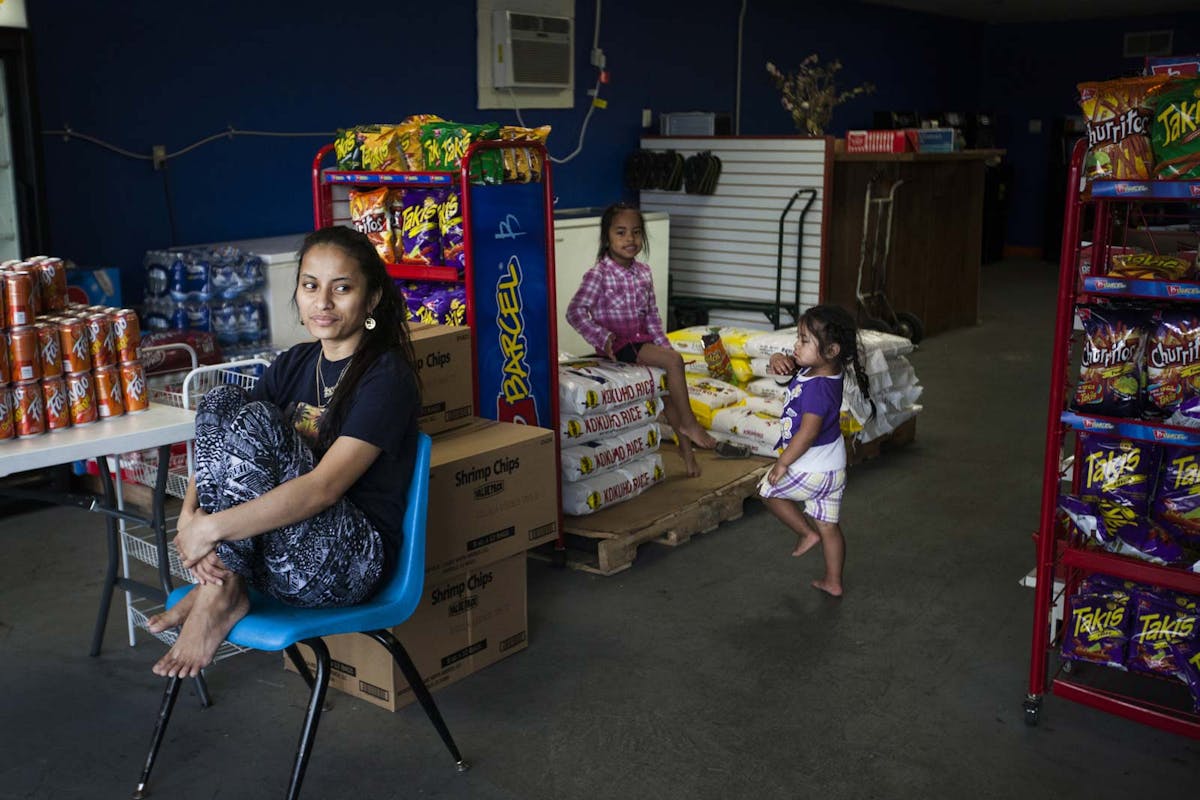
Last November, I met a pretty, extremely timid 21-year-old woman I’ll call Lisa in a Springdale McDonald’s. Three months earlier, Lisa had been living at her parents’ home in Majuro. Seven-months pregnant and single—her boyfriend had broken up with her when he found out she was pregnant—Lisa was not sure what she was going to do with the child, when two women came to visit her. If she relinquished her baby in the United States, Lisa said they told her, the adoptive family would buy her a house in Hawaii and help her find a job. Lisa’s parents were sick with diabetes; the women promised—according to Lisa—that, after the adoption was complete, they’d bring her parents over as well. She’d never been off the Islands, and she already had another son who had been adopted by her parents. (The father of that child also failed to support him.) Her mother told her to go. “Life in the Marshall Islands is very hard,” Lisa said.
In August, two weeks after the facilitators—who, Lisa said, were working on behalf of Arizona attorney Paul Petersen—approached her, Lisa prepared to leave. Petersen said via email that he does not have anyone working directly for him in the Marshall Islands, and that Lisa approached one of his facilitators who just happened to be back visiting the islands. But when Lisa and her parents arrived at the airport, she said there was a change of plans: Lisa wasn’t going to Hawaii, but instead to De Queen, Arkansas, a small town about 200 miles south of Springdale, near the Oklahoma border. Lisa was scared, she told me. Her mother advised her to stay, but her father said to go; it was the family’s only chance off the island. Petersen denied any involvement in this type of recruitment: “Promising something for someone’s consent to an adoption is flatly illegal. I never do that, and I would never have anyone associated with me do that either.” He also said he has only worked with women in the Marshall Islands who plan to remain permanently in the United States.
Lisa arrived in the rural enclave and moved into a house on the outskirts of town. About ten other pregnant Marshallese women were also staying there, some sharing a bed, the rest sleeping on the floor. The home was run by a Marshallese woman, who Lisa and another former resident of the home said was working for Petersen. Petersen maintains a house, he told me via email, “for those women who don’t have a safe place to stay who are working with me towards an adoption.” Every month, the facilitator in De Queen gave the pregnant women a stipend of a few hundred dollars. (Arkansas, like most states, allows adoptive parents and adoption lawyers to cover “reasonable” costs of medical care, legal expenses, and temporary living costs during the pregnancy.) They left the house whenever they wanted, to walk to the store or do other errands, but the facilitator also warned them against sharing some details about their arrangement with the adoptive parents. She didn’t want the women mentioning that they slept on the floor, Lisa said. More importantly, claimed Lisa, she told them not to say that they’d just arrived in the country. Instead, they were told to claim “that we’d been here for two or three years,” said Lisa.
On October 6, Lisa went into labor, and the facilitator drove her across the border to Idabel, Oklahoma, where she delivered her daughter at a local hospital. The next day, the adoptive parents—a nice couple from Utah—arrived in Idabel, and Lisa and the baby went to meet them at a motel. They spent an hour talking, and then Lisa said she signed some papers. They were written in English, which Lisa couldn’t read, so the facilitator translated them out loud. “The only thing that I know is that when the baby is about eighteen, it will come [home],” she said to me. And that the parents “will send a picture.” The parents and Lisa exchanged numbers and then they said goodbye. Lisa and the facilitator returned to De Queen. Within a few weeks, Lisa moved to Springdale to live with her uncle. Lisa never would have been able to relinquish without appearing before a judge, Petersen said: Lisa “consented to her adoption in court, under oath, and they asked her questions,” he told me. “I wasn’t there, but that’s how this works.” Petersen is correct that this is standard protocol; it seems possible that Lisa, unfamiliar with U.S. procedures, may have neglected to mention this part of the process.
For at least the first six weeks following the adoption, Lisa said, the adoptive parents followed through on their promise to send her pictures. In the middle of our conversation, she took out her cell phone and counted them proudly: There were seven. But neither the facilitator nor the recruiters back in the Islands ever bought the airline tickets Lisa claimed she had been promised, and though she was too nervous to confront anyone, she came to realize that there would be no house or job in Hawaii. Instead, Lisa said, two-and-a-half weeks after she gave birth, she started working a morning shift at Tyson, hanging chickens on the line. Her parents tell her that she’ll have to work hard so that she can buy them their tickets herself.
Several weeks after Lisa left De Queen, she was followed by a friend from the house, a woman I’ll call Sunny, a 23-year-old who was so hesitant to discuss her story that she could barely sit still when we spoke in a parked car outside a Springdale laundromat late at night last November. On Majuro, Sunny said that she had been told all the same things as Lisa: that the adoptive parents would buy her a house and find her a job. “They didn’t say how much [money they’d give us monthly],” Sunny said through Lisa, who acted as a translator, “they just said they would buy us a house.” But after staying in De Queen for three months, Sunny called family members in Springdale and asked them to pick her up. She didn’t want to give up her baby. She moved in with relatives, and, at the time we met, mostly stayed in their home, terrified of being discovered.
The family that had planned to adopt Sunny’s child wrote her a kind note, she said. The facilitator was less gracious; she called Lisa repeatedly, Lisa said, demanding to know where Sunny had gone. She texted Sunny’s phone, too, saying she had to repay the money spent on her plane ticket, food, and rent, and had the other expectant mothers call and text as well. They texted until the minutes on Sunny’s phone ran out, Sunny said; at the time we met, she didn’t have the money to turn the phone back on. (The facilitator did not respond to repeated interview requests, passed along through Petersen.)
The law in the Marshall Islands is clear. The Marshall Islands Adoption Act of 2002—developed in part by Roby—prohibits soliciting a child for adoption or “knowingly, encouraging, advising or facilitating a person to travel outside the Republic for purposes of placing that person’s child or children, whether born or unborn, for adoption.” The act also states that any form of monetary inducement is prohibited. Violations of the act are punishable, though the punishments seem meager: fines up to $1,000 or jail time of up to a year.
The U.S. law governing what happens to Marshallese women in Arkansas is murkier. The amended Compact of Free Association states that “a person who is coming to the United States pursuant to an adoption outside the United States, or for the purpose of adoption in the United States, is ineligible for admission under the Compact.” After the amended compact had passed—perhaps to clarify this issue—Hawaii Senator Daniel Akaka and two other senators wrote to the Department of Homeland Security (DHS) asking for the department’s assurance that the amended compact would “preclude the practice of allowing the [Federated States of Micronesia] and [Republic of Marshall Islands] birth mothers to be admitted visa-free as nonimmigrants under the Compact for the purpose of completing prearranged adoptions after their child is born in the United States.” A representative for DHS wrote back, acknowledging that the department understood Congress’s intent as expressed in the letter. (But it is unclear that the amended compact has ever been enforced, and it appears that there has not been greater clarification since the exchange with DHS.) Arkansas state family law prohibits the offering or receiving of any “thing of value as a consideration for the relinquishment of a minor for adoption.”
As Petersen put it to me: “Welcome to the world of legal realities. We all have differing opinions on things. ... If their intent was to prevent that kind of thing, they’re failing miserably. And it’s because it’s unenforceable. If they really want to stop it, then they should bar all Marshallese people—women—from coming to the U.S. unless they have a medical examiner show they’re not pregnant.” Cordes said there are “very different takes” on the legality of bringing expectant mothers from the Marshall Islands. He said he’s done it once, but that it was a “very exceptional circumstance.” While it might not currently meet the strict standards of legal definition, many observers—including some of the adoption brokers and attorneys themselves—just call all this moving of bodies what it looks like: human trafficking. “[They’re] making money off us,” Lisa said simply.
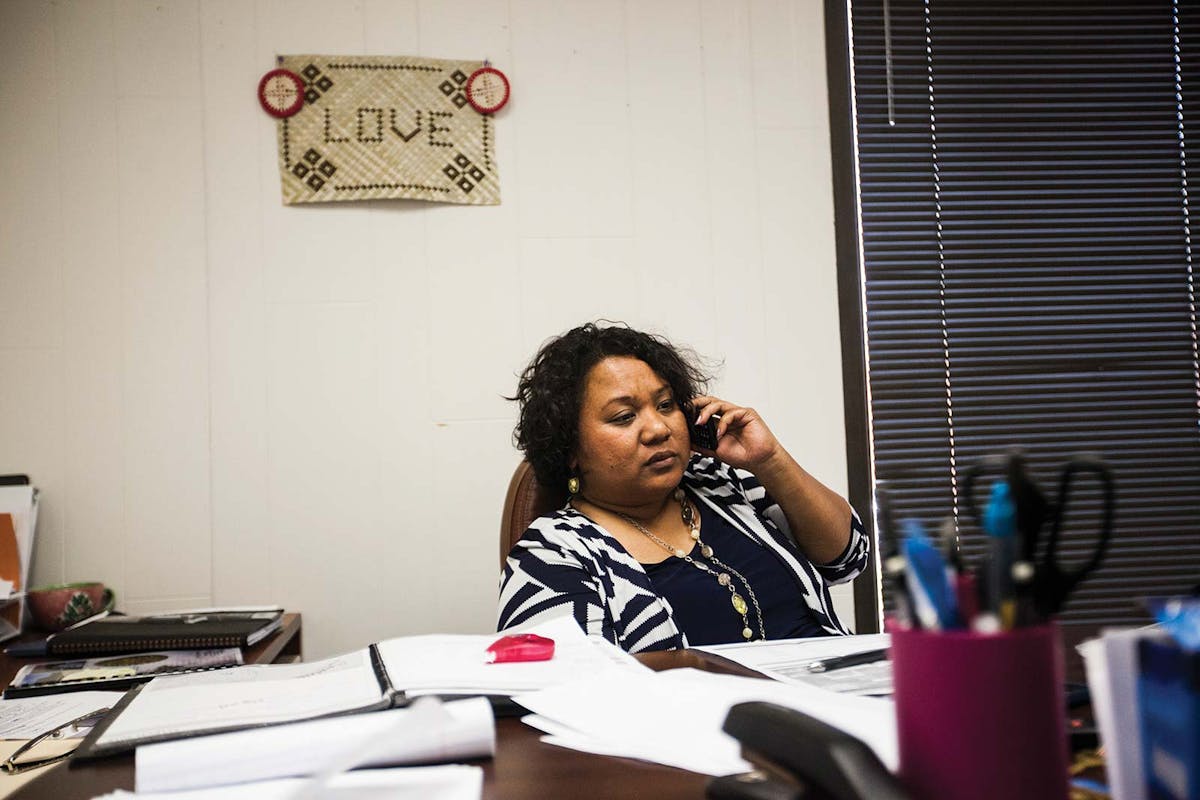
There are some signs that growing scrutiny is having an effect. A handful of lawsuits have gained some traction. A litigator for Legal Aid of Arkansas, Marshall Prettyman, said he’s defended Marshallese women who backed out of adoptions and were subsequently threatened with expensive lawsuits. (Prettyman said that two of the lawsuits he’s worked on—for both Marshallese and Latino mothers—have involved Woodruff and Cordes.) Another group of disgruntled Marshallese birth mothers—somewhat ironically, aided by Aine—are reportedly collecting complaints about Woodruff. At the center of that effort is Sharlyn Lang, a 45-year-old grandmother who, in 2014, successfully blocked the adoption of her granddaughter by sitting vigil in the hospital until the adoptive parents gave up. Lang, a stylish and passionate woman who has lived in the United States for more than a decade and works as a translator for a car dealership, said she wasn’t intimidated. But most recent emigrants, she said, don’t have the same confidence. “This is a new country, people are afraid.”
More sweeping reform is stop-and-start. In January 2014, the Marshall Islands’ Central Adoption Authority (CAA) released an open letter warning brokers that recruiting pregnant women from the Marshall Islands would result in prosecution. For two years, the CAA’s director wrote, the agency had been watching Arkansas with concern. There had been a Marshallese father in Springdale who’d committed suicide after his girlfriend relinquished their child; pregnant Marshallese women participating in official adoptions through the CAA who were spirited away to Arkansas after being promised more money. The letter instructed adoption attorneys to register with Springdale’s Marshallese consulate. But Julianne Walsh—who’s kept abreast of Marshallese adoptions since the boom in Hawaii—said that the letter has had little consequence, and there’s been no follow-up from Majuro. This spring, Consul General Carmen Chong Gum said she was still waiting for instructions from the CAA to put the protections into effect.
Some practical efforts have had more measurable results: The court system has imposed a de-facto slowdown by insisting on a certified Marshallese translator for all adoption relinquishments; and, according to Laelan, the judges at the hearings in Washington County have begun asking tough questions: Why are the mothers relinquishing? How much money have they been given? Local hospital administrators have let the lawyers know they are on high alert for signs of coercion. Legal Aid of Arkansas is considering a community outreach campaign that would help educate Arkansas’s Marshallese population on the differences between U.S. and traditional Marshallese adoptions. One of the partners at Furlow’s pediatric clinic, Andrew Koehler, has complained directly to the FBI. “I mostly wanted to alert them to something that didn’t smell right to us,” he told me. A local judge has also contacted the FBI. A spokesperson for the FBI office in Little Rock said it would be inappropriate to comment.
But there are also signs that these measures might just prompt an evasive reaction. Last summer, doctors at Parkhill notified all the adoption attorneys in the area that they would no longer accept Medicaid for pregnant women who planned to relinquish. Medicaid had been used to cover many birth mothers’ care, even though adoption attorneys also received money from the adoptive parents to cover the birth mother’s medical bills. By indirectly confronting the attorneys with these suspicions of double-dipping, the doctors hoped to tamp down the adoption trade that seemed to be passing through their clinic. Instead, they said, the attorneys showed up with the money. Cordes, they recalled, brought a check for $35,000. Cordes denied that he brought it all in one check.
To Laelan, it seems clear that adoption brokers are trying to spread their business across multiple jurisdictions to capitalize on the fact that not all courthouses have implemented strict translation requirements. A doctor at Parkhill clinic, Robert Hix, said Marshallese patients have begun evading the doctors and nurses’ questions, and nurses have seen people exchanging babies in the parking lot in order to hide from suspicious medical staff. “As we’ve started to try to create systems to protect them,” said Koehler, “will it just become a kind of arms race,” with attorneys coaching potential birth mothers at every step? “Because it seems like we’ll always be behind on that.”
When the illicit adoption business was booming in Hawaii, it took a coordinated community campaign to create an alliance strong enough to stop it. Advocates met with Homeland Security, the FBI, and local and state legislators; judges intervened and hospitals and politicians were enlisted to help enforce regulations to protect Marshallese mothers and children. But the first step in Arkansas should probably be a widespread education campaign to help recently arrived Marshallese understand that the adoptions happening in Arkansas are a far cry from those back home. Marshallese women are offered false comfort, Lang said, through another Marshallese proverb, Jinen Koto In—or “Mother of the Wind”—which implies, even more than Jined Ilo Kobo, that nature will always return a child to her original mother. In the United States, where the rules governing closed adoptions are rigid and unyielding, that’s simply not true. Birth parents who sign away their children in closed adoptions will likely not see them for years or decades—if ever.
When I visited Maryann and Dexter Koshiba’s home in Huntsville last November, signs of neglect were apparent on the grounds of their apartment complex: Toys and discarded furniture were strewn around the lawn, most of the apartment numbers were written on the doors in permanent marker, and an inch of thick, early winter ice encased the outside staircase. The inside of their apartment, however, was different: sparsely furnished, but neat, with a thick, pink, floral rug lending the room a pop of colorful optimism. It was a bare-bones evocation of the better life that many Marshallese hope for when they emigrate to this corner of Arkansas. Maryann sat on the rug as the couple spoke with me; when Dexter came home from work, he sat on the couch. At one point, one of his daughters toddled over to him, and he reached for her, swinging her onto his lap as Maryann watched. The movement was fluid and innate, a glimpse of immediate familial intimacy—one that, for the Koshibas’ youngest daughter, has been cruelly interrupted.
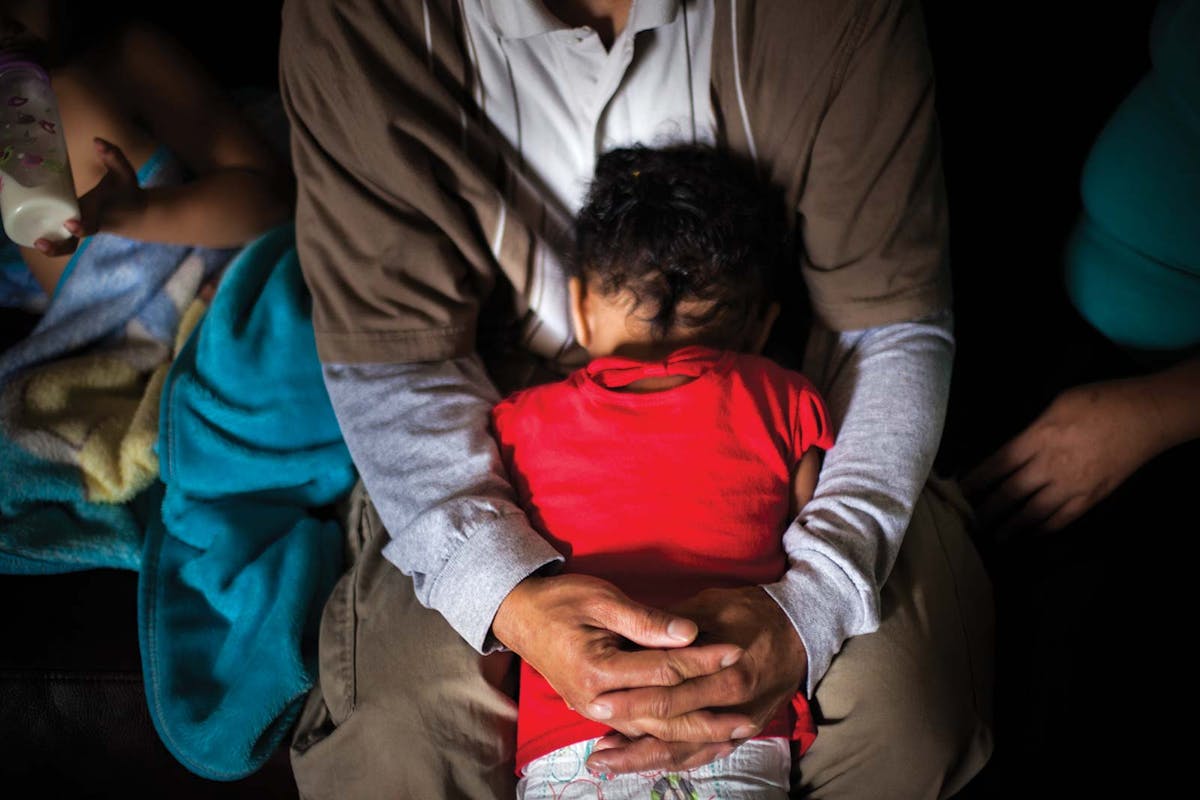
Update: In October of 2019, Paul Petersen was indicted in three states—Arkansas, Arizona, and Utah—for his alleged involvement in a human trafficking adoption scheme. The charges, which involve roughly 75 adoptions over three years, include human smuggling, sale of a child, fraud, forgery, and conspiracy to commit money laundering. Federal investigators found multiple pregnant Marshallese women in property belonging to Petersen.
